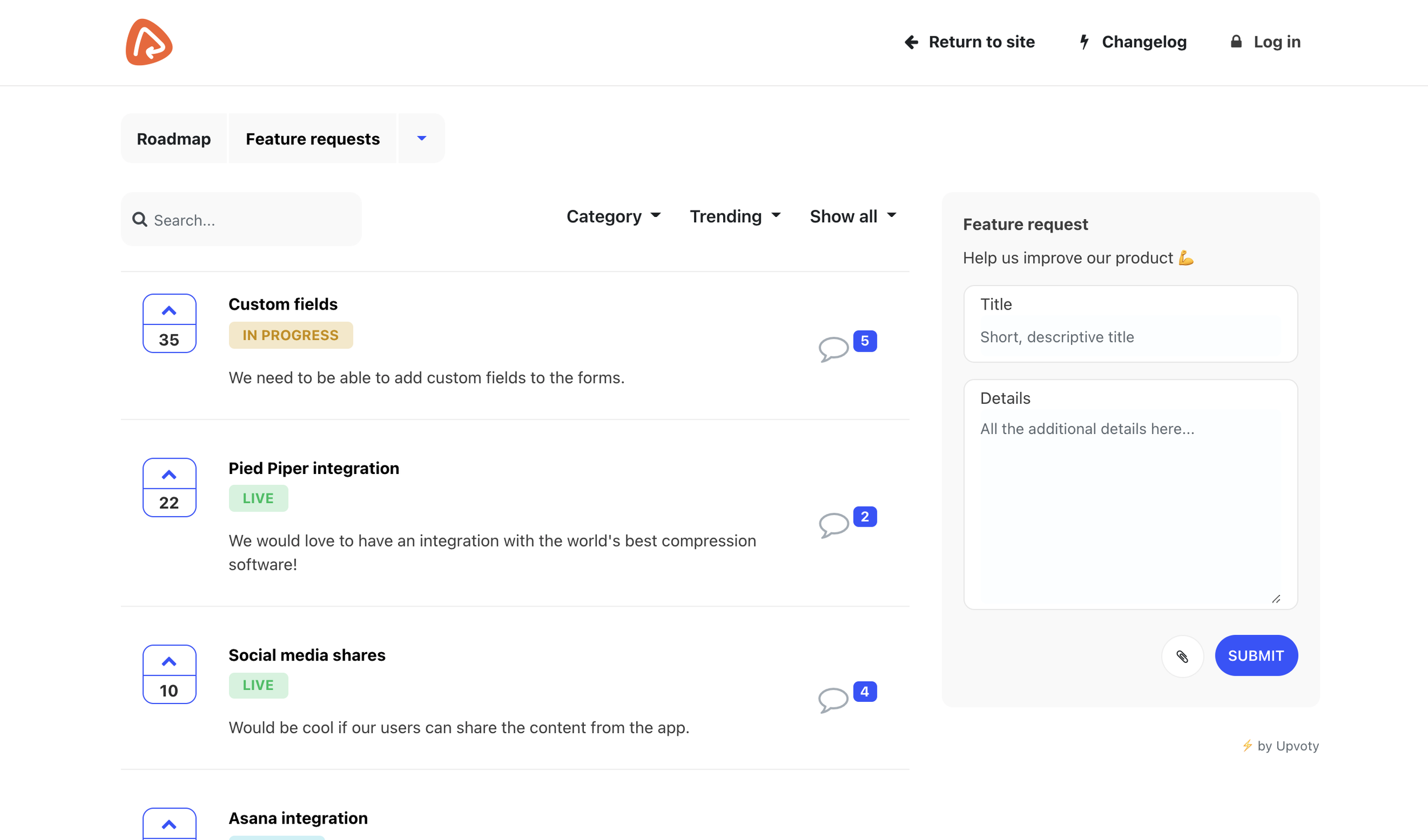Why Building a Customer Relationship is the Most Important Thing in SaaS
What indicator helps predict the success of your SaaS company? Is it the number of features you’re able to launch monthly? Maybe it’s the customer Lifetime Value? Or perhaps it’s the Net Promoter Score?All metrics are significant, yet nothing predicts future success more than your customer satisfaction levels.Just think about it: If your customers are happy, they’re more likely to continue using your product, regardless of any issues they may have with your software. Also, they’re more willing to recommend your platform to their friends or acquaintances, along with leaving positive feedback on pages such as Capterra or G2Crowd. How do you keep your customers happy? Only by building a proactive and transparent relationship with them.According to Help Scout, “Customer relations is the company-wide process of nurturing positive relationships with your customers — the sum of all customer interactions and experiences.” As the article notes, “A great customer relations strategy delivers tremendous ROI, helping boost customer acquisition, loyalty, and satisfaction.”Building a positive customer relationship is one of the most effective business strategies. Otherwise, you risk compromising your growth rates.
How do you keep your customers happy? Only by building a proactive and transparent relationship with them.According to Help Scout, “Customer relations is the company-wide process of nurturing positive relationships with your customers — the sum of all customer interactions and experiences.” As the article notes, “A great customer relations strategy delivers tremendous ROI, helping boost customer acquisition, loyalty, and satisfaction.”Building a positive customer relationship is one of the most effective business strategies. Otherwise, you risk compromising your growth rates.
The benefits of developing strong relationships with your customers
Customer relations aims to create a mutually beneficial interaction with the people using your product that goes beyond the initial purchase. Here’s how it works in terms of growth benefits for your SaaS business:
? Gaining new brand ambassadors
Public acknowledgment and praise are not only inspiring but also tremendously positive for your company. Imagine having built a good relationship with a customer who has a big audience. A simple shout-out or positive post on social media will transform into new business opportunities. Think about all the people that will be curious to access your website, check your content, analyze your offer, and maybe try the free trial of your product.
? Receiving positive and detailed reviews
As mentioned above, when you have a good relationship with your customers, you can ask them for a little favor or even incentivize them to leave a comment on platforms such as Capterra and G2Crowd.
And compared to reviews of only a few lines, the people you’ve built a relationship with will be more likely to publish a detailed description of your product and how it helped them achieve a specific result. The more reviews you get from your happy customers, the more trustworthy your brand will become. This will lead to new interesting prospects and paying customers.
? Leveraging word-of-mouth marketing
Some customers may not be interested in praising you in public, but they’ll recommend your software to their friends and co-workers. Regardless of how many resources you’re investing in advertising and social media, there’s nothing more powerful than getting recommended by someone who’s successfully using your product.
? Achieving higher retention and a lower churn rate
Happy customers are more likely to stay and keep using your software even if there are bumps in the road, such as bugs or needs for improvement. Developing a strong relationship with your customers goes beyond efficient communication, discounts, and offers. It helps you build trust and show your customers how much you care about their success.People will stay because they want to be treated well and they want to have the certainty that you work for their interests. As a matter of fact, according to ProfitWell, “Statistics vary from industry to industry, but research indicates that customer acquisition is a far more expensive venture than retention. In fact, it may cost up to 5 times more to acquire a new customer than to keep an existing one.”So instead of spending all of your resources on acquiring new customers, better invest in building a relationship with your recurrent customer base, making sure they’ll stay.
? Developing better upselling opportunities
If you have different products that cover multiple customer pain points, chances are your customer success and sales teams won’t have any problem upselling new solutions. All because you’ve put in the work, you’ve built a positive relationship with your customers, and you’ve gained their trust.
? Accessing better user feedback
Happy customers will be more willing to give you the necessary feedback to help you develop your product. When building and maintaining a positive relationship with your customers, they’ll be more invested in your growth and they’ll be more interested in seeing you expand your platform and offer new solutions. It will simply be easier to get user feedback. People will be more open to answer your surveys or even engage with your feedback boards, adding new suggestions, and voting on new features or ideas.
It will simply be easier to get user feedback. People will be more open to answer your surveys or even engage with your feedback boards, adding new suggestions, and voting on new features or ideas.
? Building an engaged community
Happy customers are dedicated, people. They’ll want to help other customers to use your product more efficiently and achieve better results. That’s actually what we see on community boards run by some SaaS companies. On these forums, you can see customers answering people’s questions, solving challenges, and sharing their progress. You can’t develop a real community without having first built a positive relationship with your customers and prospects.
? Being different from your competitors
The market is tight and there are countless solutions for the same problem. Having a high-quality, robust platform isn’t enough to gain new customers and position yourself in the market. The human factor is what will make you different from the rest. People don’t want just your technology but also your support. They don’t want to engage with only a platform. On the contrary, they want to feel that there’s an entire team working for their benefit. And that’s something you can achieve only by humanizing support and building a positive relationship with your customers.According to HubSpot, “Since customer relations considers all of your customer interactions, there are a lot of factors that can influence a customer relationship. When building positive customer relations, organizations need to take a company-wide approach that's focused on promoting customer success.”
How to build positive customer relations?
Here’s how you can do it:
Step 1. Align your messaging
 How will you and your co-workers or employees communicate with your customers? How will you deal with negative interactions? Finally, are you sure that all team members, regardless of their department and role, are communicating the same message? You see, the most annoying thing for a customer is to get different answers from different people. This creates unnecessary confusion and friction.Imagine someone from your sales team tells a customer that she can integrate the tool into their newly built Webflow website. But then your customer success team tells the same person she can’t do it. How do you think your customer will react? Obviously, there will be a lot of stress, anger, and confusion. Moreover, this mismatch in the messaging may lead to losing a customer. To keep this from happening, make sure your team is aligned, and that all of your departments communicate the same message.
How will you and your co-workers or employees communicate with your customers? How will you deal with negative interactions? Finally, are you sure that all team members, regardless of their department and role, are communicating the same message? You see, the most annoying thing for a customer is to get different answers from different people. This creates unnecessary confusion and friction.Imagine someone from your sales team tells a customer that she can integrate the tool into their newly built Webflow website. But then your customer success team tells the same person she can’t do it. How do you think your customer will react? Obviously, there will be a lot of stress, anger, and confusion. Moreover, this mismatch in the messaging may lead to losing a customer. To keep this from happening, make sure your team is aligned, and that all of your departments communicate the same message.
Step 2. Train your employees internally on how to interact with your customers
 s HubSpot suggests, “Customer service training may include developing some of the ‘soft’ skills such as improving active listening, developing a professional communication style, and how to solve problems efficiently in your organizational framework.”You can’t expect all your team members to have high emotional intelligence. That’s why you’ll want to invest in training your team and help them gain the necessary skills to build a positive relationship with your customers.
s HubSpot suggests, “Customer service training may include developing some of the ‘soft’ skills such as improving active listening, developing a professional communication style, and how to solve problems efficiently in your organizational framework.”You can’t expect all your team members to have high emotional intelligence. That’s why you’ll want to invest in training your team and help them gain the necessary skills to build a positive relationship with your customers.
Step 3. Tailor your communication to your customers’ needs
 There’s no shortage of standardized answers inside a company. However, people are different, their challenges are different, and their needs are different. When you receive a ticket or an email from a customer, you can’t just copy and paste the text you have in your Resource Center.You have to read the message carefully, identify the right solution, and tailor the message. Otherwise, people won’t feel supported. There’s nothing more discouraging than receiving a standard answer from a Help article. And even if the solution is a simple or standard one, make sure to adjust the message to your customer’s problem by using the words and the context he or she provides.
There’s no shortage of standardized answers inside a company. However, people are different, their challenges are different, and their needs are different. When you receive a ticket or an email from a customer, you can’t just copy and paste the text you have in your Resource Center.You have to read the message carefully, identify the right solution, and tailor the message. Otherwise, people won’t feel supported. There’s nothing more discouraging than receiving a standard answer from a Help article. And even if the solution is a simple or standard one, make sure to adjust the message to your customer’s problem by using the words and the context he or she provides.
Step 4. Be accessible and fast
 Apart from your customer happiness indicator, the success of your company is also determined by how fast you’re communicating with people. You can’t make your customers wait for days for an answer. Also, you can’t make it difficult for them to contact you by hiding the Chat option. To build a positive customer relationship, you have to make yourself and your team accessible (by chat, by email, or even by phone) and provide a fast answer or solution.
Apart from your customer happiness indicator, the success of your company is also determined by how fast you’re communicating with people. You can’t make your customers wait for days for an answer. Also, you can’t make it difficult for them to contact you by hiding the Chat option. To build a positive customer relationship, you have to make yourself and your team accessible (by chat, by email, or even by phone) and provide a fast answer or solution.
Step 5. Empathize with your customers and exceed their expectations
 Your customers may be mad or sad. Don’t downplay their feelings. They’re trying to solve a problem they have and your help is their only hope. Empathize with them, ask them the right questions, and listen to what they have to say. Make sure they feel heard and understood.Also, try to exceed the expectations of your customers and walk the extra mile. If someone doesn’t understand how to set up a feature, don’t just send them an explanation on how to activate it, but do it for them. This will be an incredible surprise, and people will keep using your product happily.
Your customers may be mad or sad. Don’t downplay their feelings. They’re trying to solve a problem they have and your help is their only hope. Empathize with them, ask them the right questions, and listen to what they have to say. Make sure they feel heard and understood.Also, try to exceed the expectations of your customers and walk the extra mile. If someone doesn’t understand how to set up a feature, don’t just send them an explanation on how to activate it, but do it for them. This will be an incredible surprise, and people will keep using your product happily.
Step 6. Stay honest and humble
 Finally, don’t forget to be transparent and respectful. Being honest in your communication with your customers will help them understand the process. Also, it will give them the confidence that any issues appearing on the way will be solvable. Your modesty and respect, on the other hand, will help you set the tone of the conversation right and gain your customers’ trust, which will later lead to stronger relationships.
Finally, don’t forget to be transparent and respectful. Being honest in your communication with your customers will help them understand the process. Also, it will give them the confidence that any issues appearing on the way will be solvable. Your modesty and respect, on the other hand, will help you set the tone of the conversation right and gain your customers’ trust, which will later lead to stronger relationships.
Final thoughts
Building a positive customer relationship starts with the first interaction a person has with your brand. So if you want to create good customer relations, you’ll have to focus on developing a customer-centric culture inside your company. The focus on your clients’ success as well as creating long-term solutions for every customer will lead to higher retention rates, bigger growth, and a much stronger market position. Also, it will motivate both your employees or team members and your customers to foster a positive and meaningful connection that will extend beyond simple transactional exchanges.

